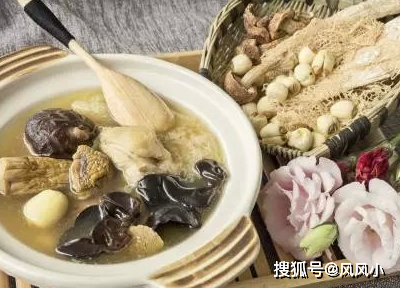Diet Therapy
Diet therapy is an important means of health preservation, and traditional Chinese medicine has long expounded its efficacy. Many foods have the function of nourishing Qi and blood, harmonizing Yin and Yang, improving the physiological functions of organs, and enhancing one’s own resistance; from the perspective of modern medicine, they also play a significant role in improving body microcirculation, regulating endocrine metabolism, and enhancing vitality.
The Yellow Emperor’s Inner Canon states: “Calm and empty, true Qi follows; the spirit remains internally, and disease stays away?” The invasion of pathogenic Qi into the body must be due to the weakness of the body’s righteous Qi. Therefore, if the deficiency of righteous Qi in the body is not treated first, what else can be done? It can be seen that deficiency is the root cause of various diseases, so supplementing the deficiency is the key to curing diseases.
Emphasizing lightness over burden
When the body’s external surface is infected with wind-cold, the superficial Qi of the skin will inevitably become weak; if the diet damages the five viscera, the body’s middle Qi will inevitably weaken; people who are prone to wind-cold are bound to have deficient Kidney Yang; those susceptible to heat pathogens will inevitably consume Kidney Yin.
Supplementing the deficiency requires attention
For these cases of deficiency, excessive tonification is not appropriate. The tonifying medicines ingested by people must be transported throughout the body through the carrier of Qi and blood to be effective. When the body is extremely weak, the circulation of Qi becomes slow, putting a pile of sweet and greasy tonifying medicines on a tired conveyor belt will not only lead to backlog of goods but also slow down the conveyor belt further, creating a vicious cycle. However, in cases of extreme deficiency, supplementation is necessary. How to resolve this contradiction? First, reduce the dosage gradually; second, temporarily refrain from using excessively oily medicines. It is advisable to start with mild sweet medicines such as Chinese yam, Coix seed, lily bulbs, and lotus seeds before advancing to stronger tonics.
1. If there is damp-heat in the upper Jiao, manifested by symptoms such as heat in the head, cough with phlegm, sticky mouth, etc., tonification at this time will obstruct the descending of tonifying effects, not only depriving the lower part of nourishment but also exacerbating the damp-heat on top, leading to internal heat. In this situation, treatment should begin at the upper Jiao, ventilating lung Qi, and consuming lung-ventilating and cough-relieving substances like almonds.
2. If there is damp-heat in the middle Jiao, with symptoms such as epigastric pain, burning sensation, no thirst despite dryness, lack of appetite, yellow urine, and constipation, tonification will overload the Spleen and Stomach, leading to stagnation of food transformation, resulting in abdominal distension, and nausea. Thus, it is necessary to resolve damp-heat in the middle Jiao first, consuming liver-tonifying and dampness suppressing substances like ginger, Poria, and Atractylodes.
3. If there is damp-heat in the lower Jiao, manifested by symptoms such as lower limb edema, short and dark urinary output, turbid urine, tonification will exacerbate the condition. It is advisable to consume foods like Coix seed to promote diuresis.
The most common initial manifestation of external pathogenic factors is the common cold, often accompanied by fever. When invaded by external pathogens, the body’s Zheng Qi (upright Qi) must battle against the pathogenic Qi, with the immediate priority being to bring the Zheng Qi to the surface to expel the pathogen. Prioritizing tonification over issuing the battle command to the Zheng Qi at this point may prolong the illness. Therefore, after experiencing an external pathogen, pungent medicinal herbs are generally used to disperse the pathogen. For instance, if the body is weak and affected by wind-cold, one can first consume ginger soup with brown sugar to expel the cold before tonifying.
Recommended Recipes
Purslane Congee
Red Date and Black Fungus Congee
Longan with Free-Range Chicken


